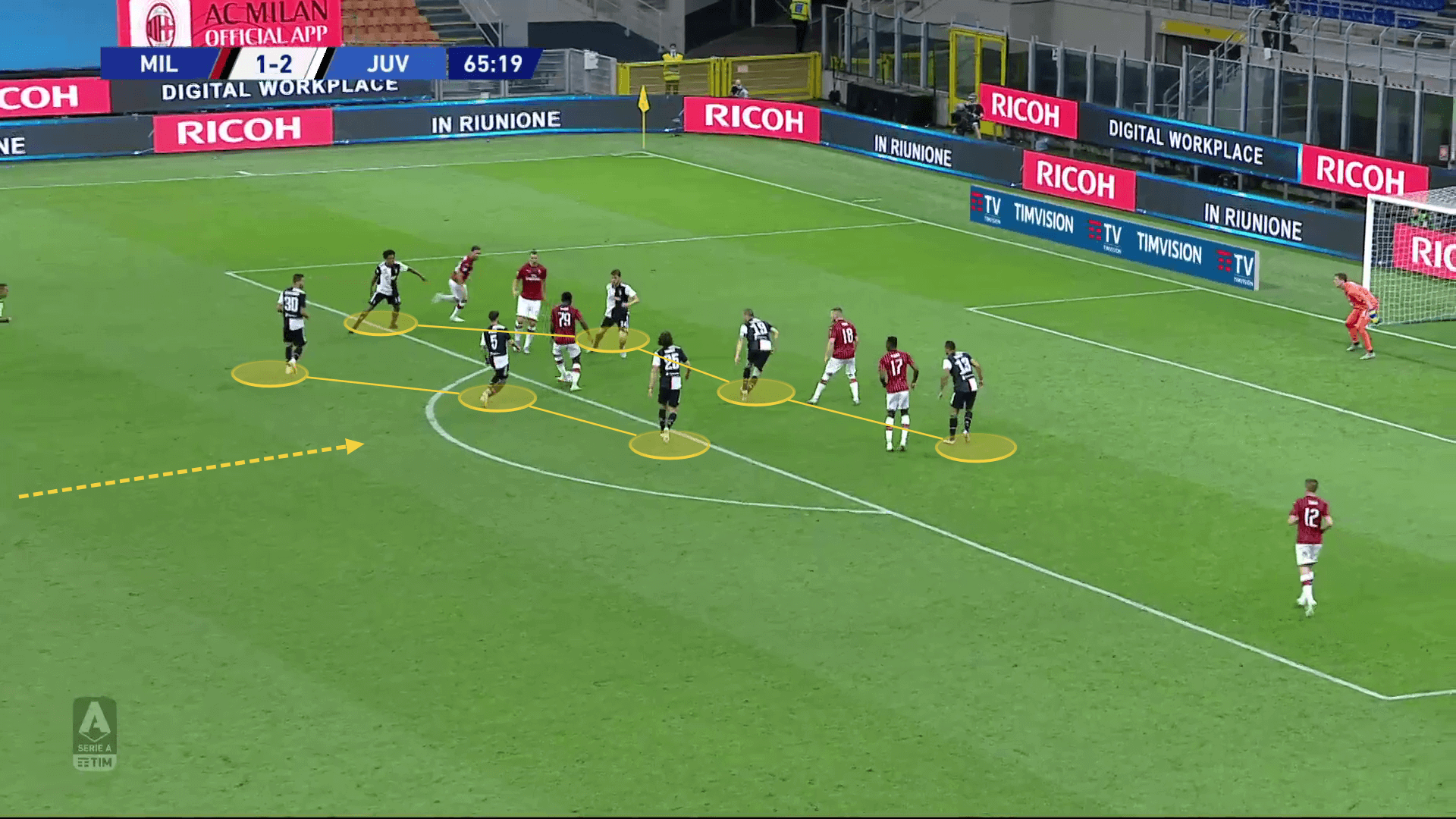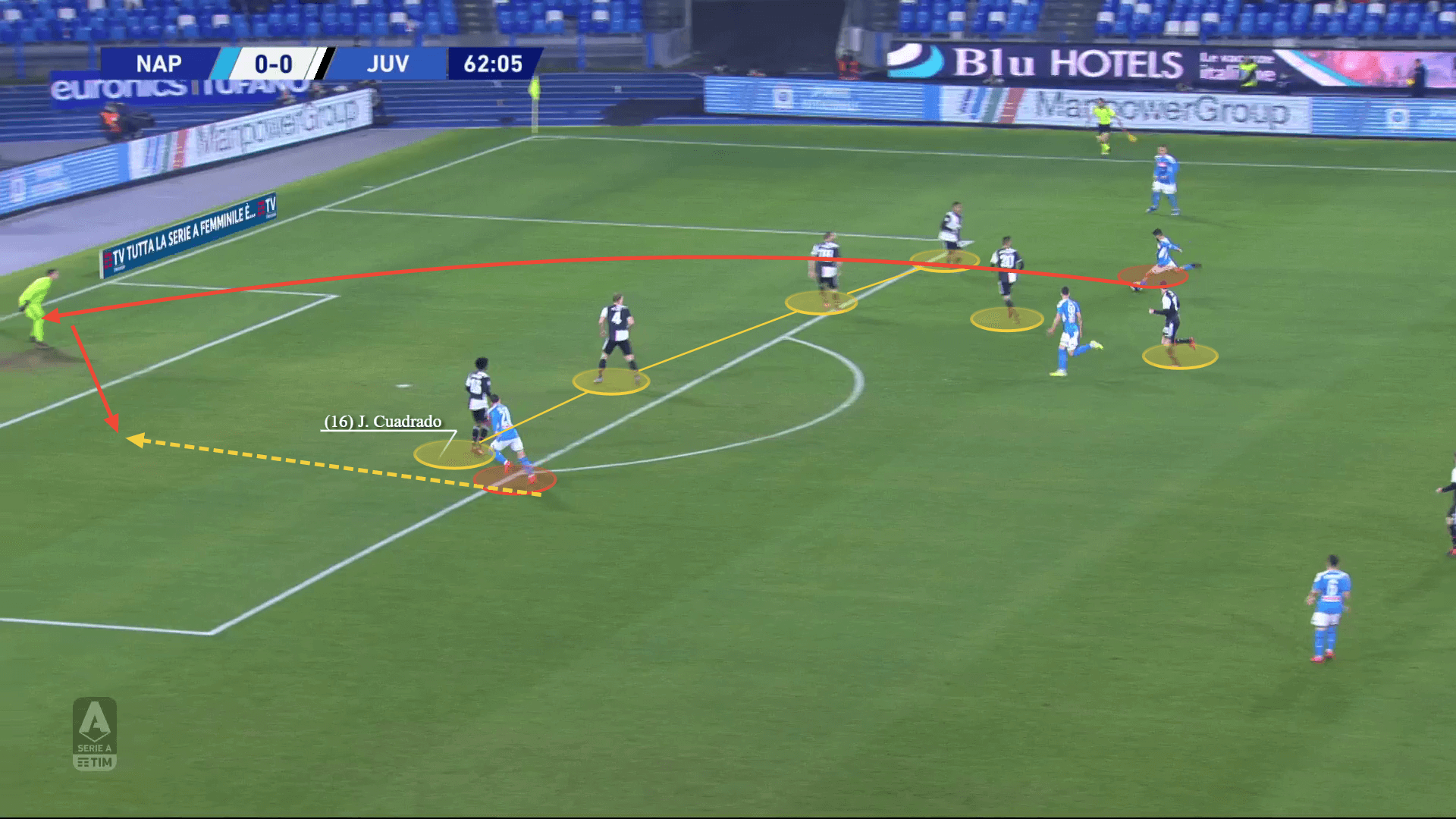Despite being on the road to their ninth title in a row, sticking to Maurizio Sarri’s style of play wasn’t as easy for Juventus as it seems. With the presence of some new talented players and the new coach, it was expected that the team is going to flourish and perform even better than before.
This could be said for some aspects of their game, but when it comes to their defensive performance, it isn’t as satisfying as it was expected to be with the likes of the new additions and the old experienced players that know Juventus’ values to the core.
Although they kept a lot of clean sheets throughout the season, they also displayed some less impressive defensive performances. In this tactical analysis, we are going to dive into the Bianconerri’s defensive ventures and see what are the possible reasons behind their vulnerability. We will see what are the tactics Sarri could use to avoid performing poorly at the back.
Data analysis
Firstly in this data analysis section, we’re going to look into their aerial performance. Having strong aerial abilities is very important for being able to retain possession all over the pitch, but also to defend well in the most vulnerable area, the box. What is interesting to see is that Juventus have the second-best success rate (53%) in their aerial duels, right after Roma with 56%. Their winning percentage is well over the league average of 48.34%.
But looking closely though, we can see that the change in their tactical approach affected their aerial duels’ frequency. With their 22.22 aerials per 90 minutes, there are second to last in the league, showing that they don’t rely on aerial challenges as much as before. Last season their average number of aerials was more than 30 per game. The midfield doesn’t seem to put many efforts in the air as all Blaise Matuidi, Sami Khedira and Rodrigo Bentancur have decreased their average numbers compared to the previous seasons.
When it comes to players’ actions, there’s some noticeable change in their performance. One player, that doesn’t seem to play on his potential, especially compared to the previous seasons is Alex Sandro.
There’s a slight drop in some of his defensive metrics. Looking at them separately it doesn’t seem like a huge gap, especially having in mind the changed team strategy. But looking into his overall performance these changes do affect his positive contribution on the pitch.
In the below image, you could see that his frequency rate in some of the metrics dropped, but what is more important is that his success rate is also affected and it seems like he doesn’t put enough effort in some of his defensive actions.

His drop in performance doesn’t seem like Juventus’ main problem in the backline though. Many of the mistakes leading to goals have been done in the central areas, where despite having a good balance of talent and experience, it seems that there is a lack of awareness occasionally, which affects their record. The injuries make it hard to keep the consistency too and the transition from Leonardo Bonucci and Giorgio Chiellini to integrating the new players doesn’t happen as smoothly as planned.

In the above graphic, we picked the highest-rated regular starters from the best defences in the league of Lazio and Inter. This was in aim to compare Juve’s players’ data performance next to the other best teams and see if their statistics match their defensive record. As you can see, most of the Juventus players are performing worse than their opponents in the above defensive metrics. While diving into defensive duels might be closely connected to how many opportunities they allow to concede, the other metrics show that their determination to win the ball back is lower than the usual.
Lack of awareness and vulnerability
While exploring the main reasons behind conceding most of their goals, the main noticeable thing is that most of them come from inaccurate actions in the central areas. While the team have some solid centre-backs, it seems that they often lack awareness and can’t employ a successful marking strategy, especially against attack-minded teams with a lot of movement in the final third.
They often find it hard to split responsibilities and mark the opposition properly should the box area be overloaded with players. Despite some of the players’ experience, they do sometimes look unaware of their opponents’ positioning and movement off the ball. That’s why they allow the opposite players to make runs into the box, which cause them a lot of trouble.


They could be dragged out of position quite easily and often allow enough space and time on the ball to the opposition in key areas. Being focused on the ball carrier and the possible receivers is very important, but the lack of structure and enough coverage by the Juve defenders often result in them conceding goals. Their four-man defence is often too compact, which allows being stretched out. This results in opening spaces between the players which are impossible to close off in a split-second.


Their lack of awareness often leads to the defenders acting hasty and not being successful in 1vs1 situations. In many occasions, their 1vs1 performance when attacked on speed isn’t well balanced and there are two outcomes: they either don’t put enough pressure on the ball carrier, or they do make unmeasured interventions and commit fouls. Respectively they often either concede a goal or give away a penalty kick.
Defending counters and actions in key areas
The Bianconerri also turn out vulnerable when being caught on a counter. That’s mainly due to their tendency of being highly positioned and using the full-backs in the more advanced positions. The team often fail in their defensive positioning when being attacked on speed and the players not being able to drop back in a timely manner breaks their structure and makes it easy for the opposition to exploit gaps.
That’s also when the abovementioned risky challenges take place since the centre-backs often lack support during transitions and are forced to challenge the ball carrier in order to stop the attacks.
Even in the cases they do drop back and are well-structured they occasionally allow opposition players in behind due to being overcommitted to the ball carrier.

Juventus win 59.8% of their defensive duels which is the second-best record in Serie A after Atalanta’s 59.9%. What is key for their performance at the back though is the areas where they lose duels and the opportunities they give away. It turns out, that despite the low amount of lost duels, the Bianconerri lose the ball in the half-spaces quite often. Not only they lose it in key areas, but they also concede a lot of opportunities out of these lost battles.
In their last five games, almost every lost duel in the half-spaces has resulted in an opposition shot. In the cases they did manage to stop them from creating chances, they committed fouls and saw yellow cards. There was also a noticeable drop in their aerial performance in the box. They lost more than half of their challenges in the air, which adds to their vulnerability.
This leads to the next section in our analysis where we will examine if the backline is receiving the needed support from their midfield teammates.
Lack of support in the defensive third
The midfield line have performed the least impressive throughout the season in both phases and the combination of the new strategy and the lack of quality out there has really affected Juventus negatively. That’s noticeable during their build-up, but what turns out as their biggest vulnerability is their inability to support the defensive line in deep positions.
Many of cases when the defenders are being exposed are a result of failed communication between the lines. The midfielders drop back as a second line of defence, but they rarely put efforts into covering depth and providing additional support in the deeper areas.
While they manage to retain possession and help defensively from their midfield positions, they do not act accurately in and around the box, where the team are most vulnerable. With the backline’s tendency of allowing space, the midfield players should be much more aware of the threats and should immediately cover depth in order to avoid numerical superiority in the defensive third.

Final thoughts
Juventus have conceded 35 goals this season so far, which is by far their worst defensive record in years. Of course, part of the reason is the improvement in the other teams and employing more and more offensive tactics, but the truth is that the Bianconerri do have a decrease in their defensive performance. Numbers might not show the full picture, that’s why in this analysis in the form of scout report we pointed out what are the reasons behind their drop in performance.
The players’ awareness needs improvement as well as the communication between the lines. The backline need more support from their teammates, especially against attack-minded teams that tend to overload the advanced areas.





Comments